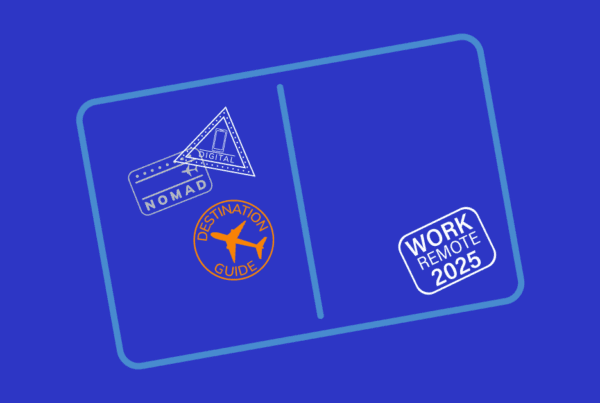
We’ve been quarantined for months now and some of us have gotten quite comfortable with the work-from-home lifestyle.
Business is starting to make the slow-but-vigilant shift toward an augmented version of the pre-pandemic way of day-to-day. However, there are several things employees may begin to miss from their time spent in isolation.
Plenty of people clamoring to return to an old way of working, but employees may quickly realize they’d like to retain some aspects of the ways they’ve had to adapt. As a result, business owners and managers may need to start implementing changes in the new “business as usual” to retain their employees and maintain satisfaction in their team.
We’ve bubbled up three mainstays of WFH life that would be relatively easy to implement at most companies—from start-ups to an enterprise-level organization, whether you’re bringing your team back to the office or you’re keeping your workers at home indefinitely. People will work harder and value their job more if you can improve your corporate culture around flexibility, comfort, and customization.
Flexibility: Workdays and scheduling
The 9-to-5 workday may have been ’80s cinematic comedy gold—and a chart-topper for Dolly Parton—but the status quo may need to be revisited. Week after week, from early spring into the fall of 2020, employees managed to start and end their days at their own pace. And, for the most part, people got their jobs done. And work flexibility isn’t necessarily a new trend. According to the U.S. Bureau of Labor Statistics, “from 1991 to 1997, the percent of full-time wage and salary workers with flexible work schedules on their principal job increased from 15.1 percent to 27.6 percent.”
While a flexible schedule may not be an option for workplaces that require high levels of customer interaction or face-to-face engagement, many of those same styles of workplaces have found a way to operate even while utilizing displaced workers. And not just function but to thrive. Studies have shown that employees who work remotely are more productive (around 13 percent) and more likely to work additional hours to get things done when necessary even if those hours are not between 9 a.m. and 5 p.m.
I guarantee some of you are business leaders concerned about out-of-office workers and just thought, “but my employees will take breaks to do laundry and dishes or watch television.” Yes. Yes, they will. But, they took the same minutes of breaks at the office, sometimes more. Office breaks are often masked as productivity—catching up with co-workers looks like collaboration, and walking to and from the breakroom looks like on-task movement. However, studies have shown that WFH employees take fewer breaks, accomplish more tasks per hour, and call in sick less frequently. Not to mention, that when the WFH employee does take a break or a day off, they’re more willing to make up that time rather than maintain a standardized workweek.
When a traditional employee wants to spend time with their children, attend a sporting event, or participate in a family function, they frequently take time off from work. When a WFH employee performs one of those personal tasks, they simply shift their schedule to work around that event with a focus on completion of tasks and achieving goals.
Let’s also contextualize this for today: If you have the opportunity to go to a long lunch—at a real brick-and-mortar restaurant with a friend—for the first time since the start of quarantine, won’t you be that much happier, energized, and productive after that afternoon? Giving yourself and your employees the opportunity to experience small moments of joy, like a two-hour lunch with an old friend, can lead to a greater sense of happiness and a stronger commitment to the company that offered them that small token of trust.
For those organizations pulling workers back to a centralized campus, consider flexible start and stop times. Do all employees need to show up at 9 a.m.? Do they all need to leave at 5 p.m.? Actually, no. The reason we have fixed workday schedules is because of the British Industrial Revolution. Factories needed their workers on set schedules to work efficiently, and workers pushed for eight-hour workdays instead of the 10-to-16-hour days they were previously working. It has been more than 200 years since the eight-hour workday was implemented in Britain, and nearly 135 years since it was implemented in America—showing that the standard working hours are more outdated than wearing United Colors of Benetton to a tea party.
Would customers actually find more value in someone picking up their phone call at 7 p.m. because some members of your staff chose an 11 a.m. to 7 p.m. work schedule? Not only does flexibility instill a sense of pride in the level of trust afforded to an employee, it also allows that employee to more easily schedule other life events—and has significant positive implications toward employee retention.
Comfort: Workwear and wellness
After more than 150 days in quarantine, several of my colleagues have addressed their love of a more comfortable work environment. It’s easy to see how people prefer working in casual clothing, sitting in their favorite chair or nook in a room full of windows, views, and natural light. Thanks to quarantine, we have unlocked the secret to being simultaneously cozy and productive.
My network has commented on how they’ll miss their comfortable gray yoga- or sweat-pants as their daily “groutfit.” Before you, or your HR team, reinstitute groutfits of yore—gray power suits and a pop-of-color power-tie for personality—as your office standard, maybe it is time to consider the fact you’re not leading a reboot of Suits or Mad Men and offer some relaxing of dress code policies.
For as long as I can remember, more offices have been implementing “casual Friday” into their dress-code policy. Recently, I’ve heard of some out-of-the-box workplaces incorporating a donation system into the mix; you can wear denim on Friday if you give a dollar to the charity of the week. Can your workplace be a bit more casual? Should you institute a charitable-giving dress code? Can your more relaxed dress code be more than just Friday based? To be clear, I’m not advocating for yoga pants as the continued Monday-Friday wear, but would it be terrible to be inventive with what a comfortable-but-appropriate workplace can look like?
Speaking of yoga, could your office start offering something like post-lunch yoga classes to get people re-motivated for the afternoon? Fashion maven Eileen Fisher is known to start meetings with a time of silence and reflection, she brings in wellness professionals for team events or yoga, she also famously hosted lunchtime meetings, pre-quarantine, at her home to make meetings feel less like work and more like a casual hangout.
A more relaxed dress code and implementation of healthy lifestyle activities may have an underlying effect of encouraging employees to be less sedentary. More frequent breaks that include movement, are shown to increase productivity.
Customization: Workplace and amenities
Whether your workforce returns to a centralized campus or works from home, giving the employee a budget or stipend to select their own chair and desk configuration can lead to a sense of pride and a feeling of trust and empowerment – plus it lets them make a selection that best fits their needs for comfort and productivity.
If you do have to return to a main building, here are ways you can create a more pleasant work environment for your returning employees:
- Hot desks or bookable conference rooms
- Each employee has a different working style. Give them options for open-air, collaborative spaces, as well as areas where they can work quietly.
- Health and safety measures
- Let’s not forget, we are still in a pandemic. Hand sanitizer and soap are a must, and communal areas should have frequent wipe-downs. If possible, check your employees’ temperatures and practice contact tracing.
- Headphones
- Headphones can help employees focus and cut down noise from phone calls, which means fewer disturbances and more productivity. Gifting a nice pair of headphones to your employees is worth the investment – trust me. Brand the pair with your logo, if you must, for a mini marketing exposure when people wear them out in public
- Flex office hours
- We went through this already, but it bears repeating: knock it off with the antiquated workday!
A place where each employee can enjoy a short time of the week with a more pleasant work environment, even a small improvement can have a big impact on an employee’s workplace satisfaction. For those staying home, the procurement of a proper desk and chair could be the catalyst for greater productivity and success as well as an increased sense of worth and perception of corporate value.
A quick review and improvement of your workdays, workwear, and workplace standards could significantly improve your team’s attitude and productivity pre-quarantine and a happy workplace creates a more productive and profitable workforce.
Chris is the President & COO of FlexTal. He brings 20+ years of experience in Customer Success, UI/UX, design, and marketing – including time within start-ups, agencies, and enterprise orgs. Chris has also served as a University adjunct professor in Advertising & Public Relations for several years.



